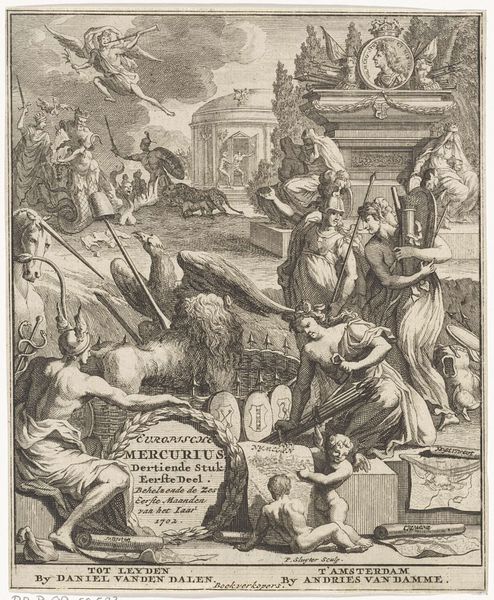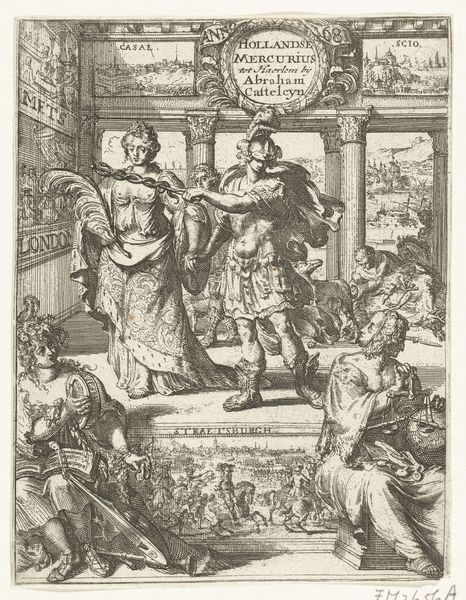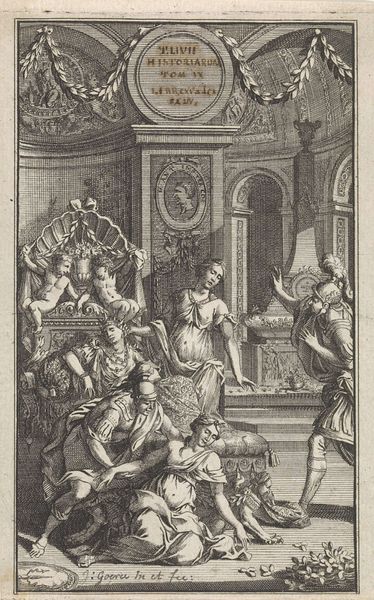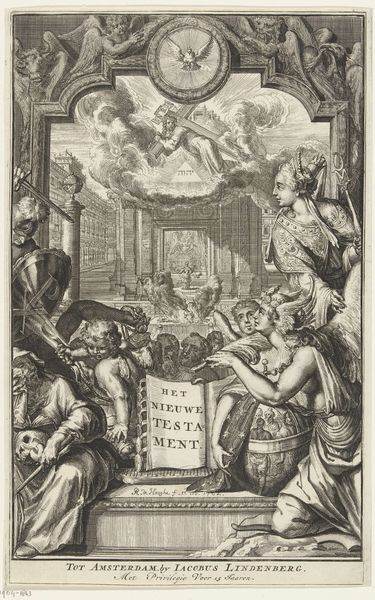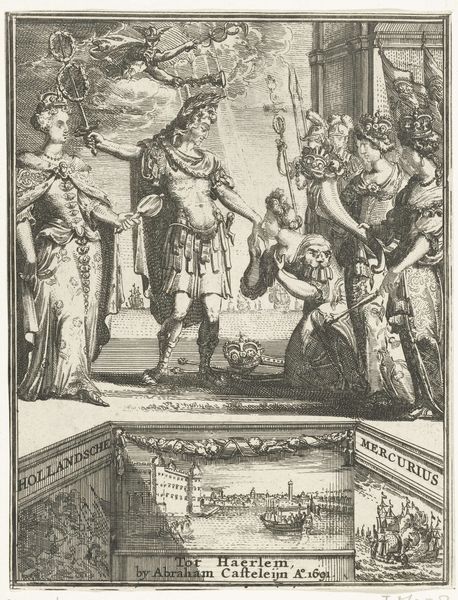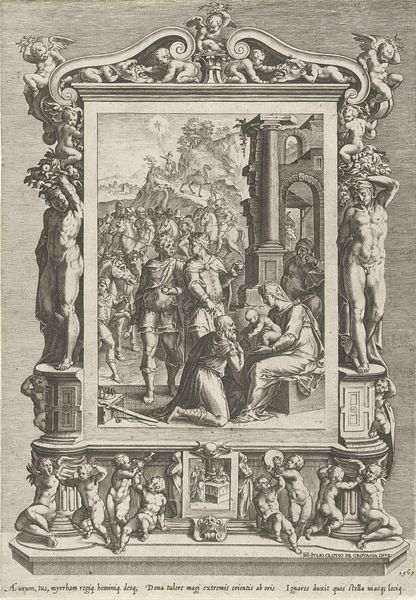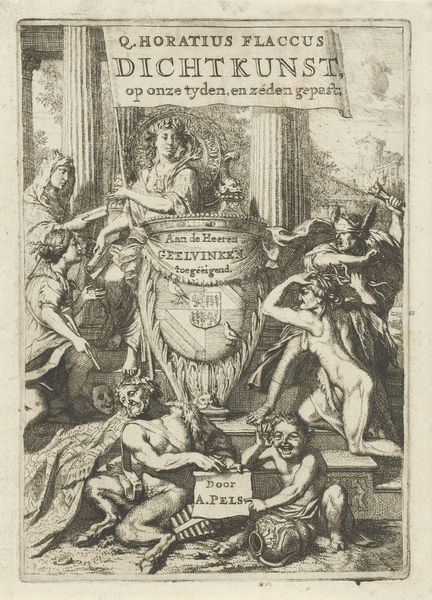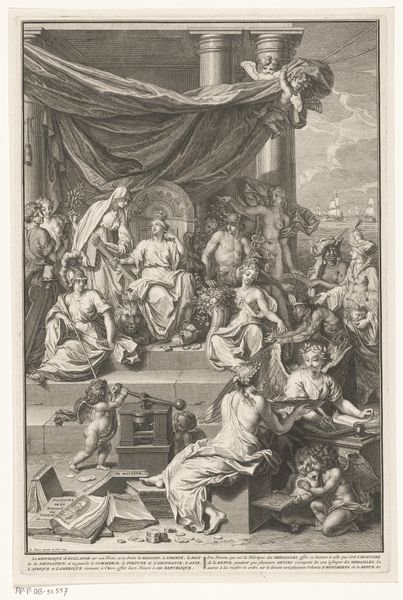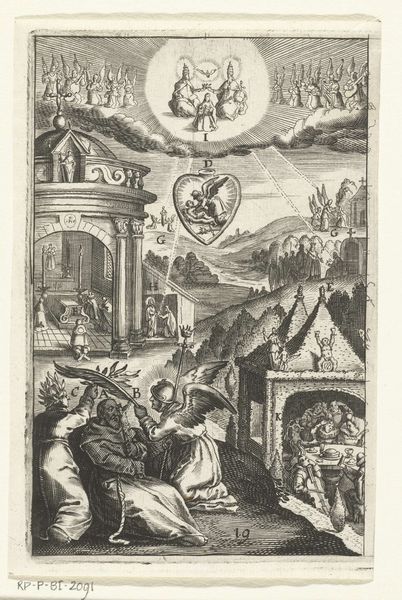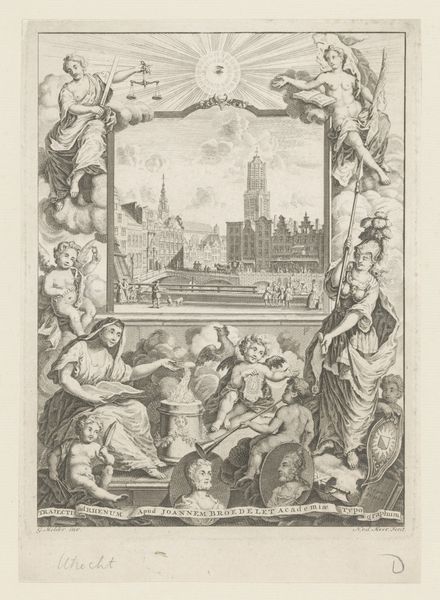
print, engraving
#
allegory
#
narrative-art
#
baroque
# print
#
figuration
#
cityscape
#
history-painting
#
engraving
Dimensions: height 166 mm, width 120 mm
Copyright: Rijks Museum: Open Domain
Editor: This is the title page for the Hollandsche Mercurius over het jaar 1679, made around 1680 by Romeyn de Hooghe. It's an engraving, and I'm immediately struck by how much is happening in one image – like a news reel in the form of a Baroque print. How do you interpret this work? Curator: I see a powerful statement on the construction of historical narratives. This title page isn’t just decorative; it's deeply embedded in the socio-political context of its time, the "Rampjaar" or disaster year. De Hooghe is crafting a visual argument. Do you notice the juxtaposition of allegorical figures with the contemporary scene of public execution? Editor: Yes, it’s hard to miss! There’s the chaotic scene of the execution right above, then these classical figures and cherubs hammering away at something down below... Is it meant to soften the blow, or highlight the violence? Curator: I think it’s neither softening nor simply sensationalizing. The allegory of laboring cherubs suggests the active 'making' of history. Justice is presented with the caduceus, symbolizing negotiation, beside the unfolding brutal event. Considering this alongside feminist theory, we can ask: Who gets to write history? Whose narratives are centered, and whose are erased through allegorical embellishment? Editor: That's a great point. It makes you wonder what biases are at play. It is not simply about what happened, but who gets to tell the story and how they want it framed for future audiences? Curator: Exactly! De Hooghe's engraving, while appearing to document, simultaneously participates in shaping a very particular vision of Dutch identity, resilience, and, importantly, justice, even in its most violent form. Editor: Wow, I'll never look at historical prints the same way again. It's a powerful reminder that art is never neutral; it's always making an argument. Curator: Indeed. And by understanding that argument, we can better interrogate the narratives we inherit.
Comments
No comments
Be the first to comment and join the conversation on the ultimate creative platform.
